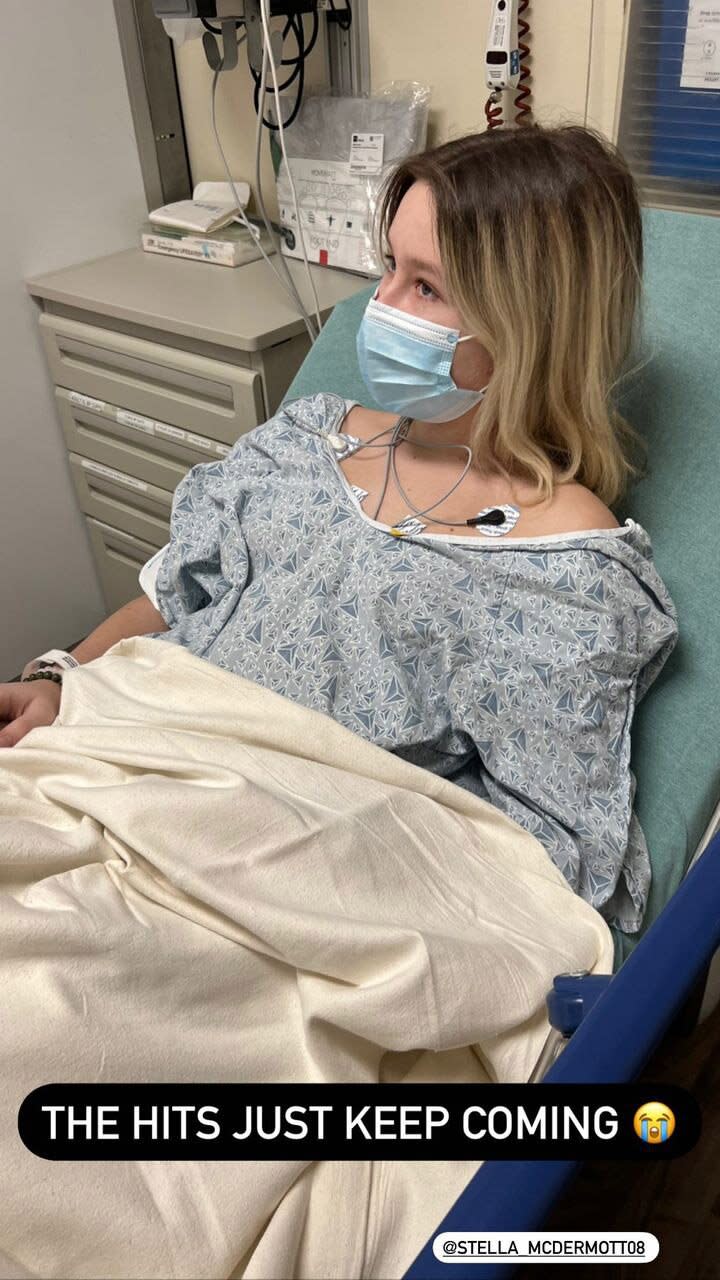Tori Spelling's daughter was hospitalized with a hemiplegic migraine — but what is it?
The "Beverly Hills, 90210" alum shared that her daughter, 14, was in the hospital last week.
This article is for informational purposes only and is not a substitute for professional medical advice, diagnosis or treatment. Contact a qualified medical professional before engaging in any physical activity, or making any changes to your diet, medication or lifestyle.
Tori Spelling is opening up about her daughter's recent hospital trip.
Over the weekend, the 49-year-old actress took to Instagram to share an update about her 14-year-old daughter, Stella, who was "feeling much better" after being hospitalized earlier in the week.
Late Wednesday, Spelling shared an Instagram Story of her daughter with multiple wires while lying in a hospital bed, wearing a gown and face mask.
"The hits just keep coming," Spelling added as on-screen text to the photo, while tagging her daughter, whom she shares with Canadian actor, Dean McDermott, 56.

Over the weekend, Spelling posted another Instagram Story of her daughter cuddling a dog after being released from the hospital.
"I wanted to thank everyone for all the well wishes for Stella," the "Beverly Hills, 90210" alum began in the on-screen text to her update. "She is home and feeling much better. At the ER, she was diagnosed with a hemiplegic migraine.
"It can be terrifying if you don't know what's happening or about this type of migraine. As a migraine sufferer my entire life, I had no idea about this. Grateful to everyone at the ER. They were amazing and took great loving care of her."
What is a hemiplegic migraine?
Migraines can differ in the way they present, but a hemiplegic migraine is "extremely rare," according to the American Migraine Foundation. It's a version of a migraine where someone experiences weakness on one side of their body, in addition to a headache and other migraine symptoms.
The weakness is a form of migraine aura, which are symptoms that occur with, or before, migraine pain, such as changes in vision, speech or sensation.
Hemiplegic migraines are divided into two categories: Familial, which means they run in the family, and sporadic, meaning they occur when someone has no family history. Oftentimes, they begin in childhood.
Signs and symptoms of a hemiplegic migraine
Many symptoms of a hemiplegic migraine are similar to a stroke, and they can last for hours, days or even weeks. Eventually, most symptoms will completely go away, but it's important to seek immediate medical attention:
Weakness on one side of the body
Severe, throbbing pain, often on one side of the head
Pins-and-needles, usually moving between the hand and arm
Numbness on one side of the body, including the arm, leg and face
Dizziness
Fever
Nausea and vomiting
Slurred speech
Confusion
Problems with coordination
Seeing double vision or blind spots
Increased sensitivity to light, sound and smell
Unlike a stroke, these symptoms will usually build slowly, typically over half an hour. They'll then slowly resolve, with muscle problems often lasting the longest.
Most of the time, hemiplegic migraines will become less frequent as you get older. It's rare for a hemiplegic migraine to cause permanent symptoms, comas or death.
What causes a hemiplegic migraine?
If you have a familial hemiplegic migraine, there are four sub-types distinguished by genetic causes:
Type 1: The most common type of a familial hemiplegic migraine is caused by mutations in the CACNA1A gene, often associated with a disorder called cerebellar degeneration which affects nerves in the back of the brain
Type 2: Caused by mutations in the ATP1A2 gene, which may be associated with seizures
Type 3: Caused by mutations in the SCN1A gene
Type 4: Diagnosed if no mutation currently known to cause a familial hemiplegic migraine can be found
Some studies have also associated a mutation in the PRRT2 gene to cause a familial hemiplegic migraine.
It's not always possible to determine what triggers a hemiplegic migraine. The American Migraine Foundation indicates certain foods or smells, lights, stress, too little or too much sleep, physical activity and head trauma are some triggers.
Who's at risk of a hemiplegic migraine?
Migraines are common worldwide, with roughly one billion people experiencing the condition. But out of those cases, only 0.01 per cent experience hemiplegic migraines.
Women are around three times more likely to have a hemiplegic migraine compared to men, and the average age of onset is 12 to 17-years-old.
Let us know what you think by commenting below and tweeting @YahooStyleCA! Follow us on Twitter and Instagram.


